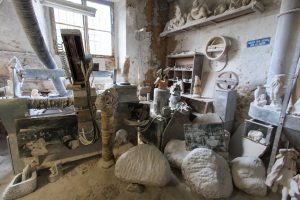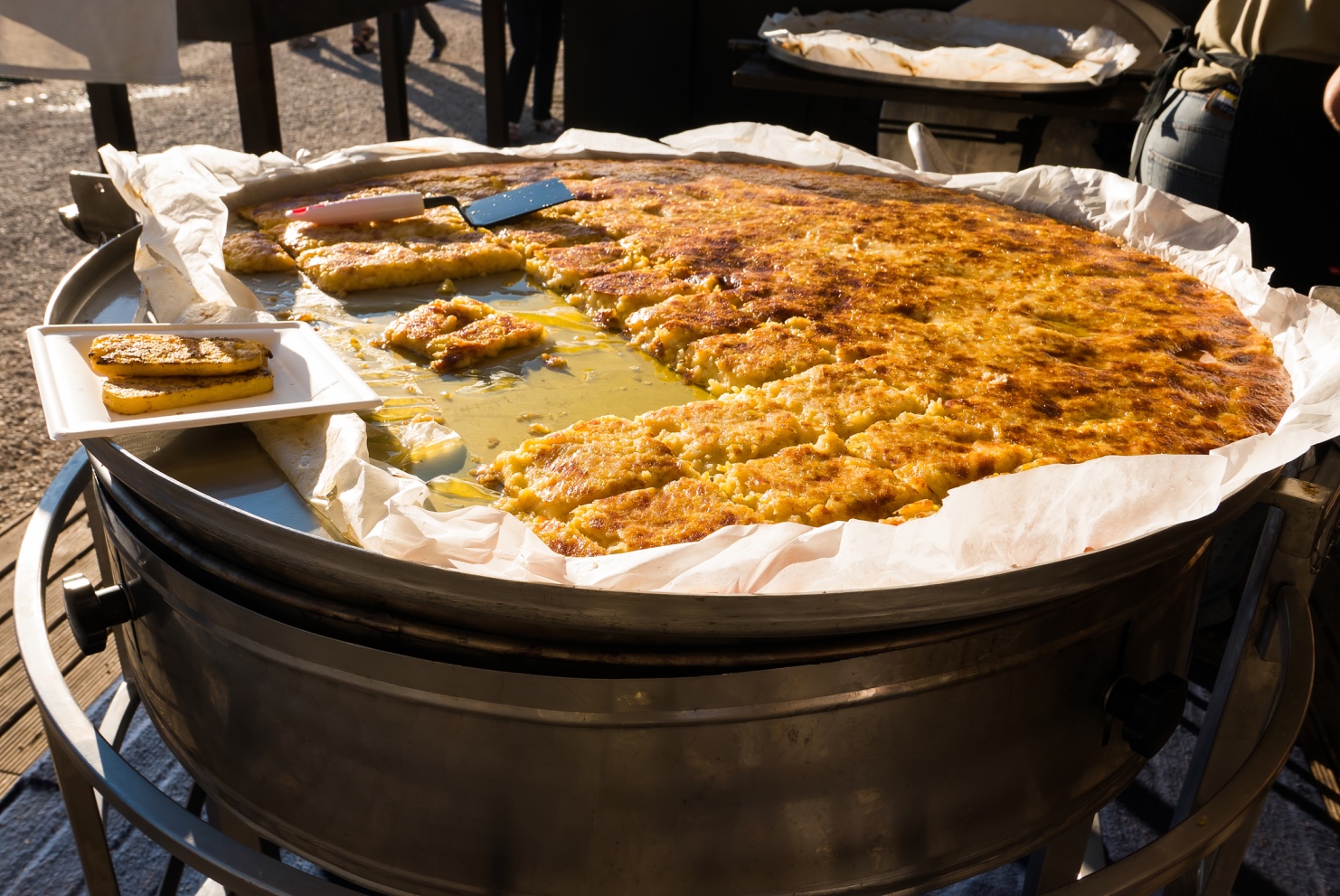From Tuscany to the United States, with some special events in San Francisco: the celebrations for the 950th anniversary since the first stone of the Pisa Cathedral was laid and the 450th anniversary of the birth of Galileo Galilei got just big.
In fact, starting from this occurrence, a cultural exchange is taking place between the town of Pisa, in Tuscany, and San Francisco, California, for the next few months. A calendar full of events aiming to strengthen the relationship between the two regions, but also to promote the Italian history and art in the American context.
First, the Tower of Pisa, considered one of the most iconic Italian monuments in the world, is now on the spotlight in San Francisco.
Volterra’s artisans working the alabaster stone
On January 13, a full 8-foot replica of the Leaning tower has been unveiled at the Westfield Mall. The tower represents one of the greatest works made by artisans in Volterra, who use white and transparent alabaster stone as main material for their handcrafts. The discovery of alabaster was made by the Etruscans who settled in the area and, continuing until the 1600s, the production was mainly characterized by the creation of artworks with religious purposes.
Only starting in the middle of the 17th century, the production of alabaster works turned into a commercial activity: both high and lower quality objects were requested by private customers who used to request mainly art copies, busts or vases. In such perspective, the Leaning Tower model turns into something very special and the exhibition will mainly be highlighting the increasing importance of Italian local manufacturers and their works.
The expedition of the Leaning Tower in California includes appointments, conferences and trade initiatives involving journalists, tour operators, buyers, importers, as well as potential future visitors such as students, researchers, and tourists who can taste a bit of Tuscany before flying out. The inauguration itself, which will go on until February 10, came along with the screening of videos showcasing Tuscany and featured traditional products to the American audience.

While the beauty of the Pisa Tower never stops attracting many people every year, the interest in understanding why the Tower is still standing has been growing over the last decades.
The tower is considered a miracle of the medieval engineering: with its 207 columns, it was designed as a circular bell tower that would stand 185 feet high. The bottom consists of 15 marble arches and each of the next six circles contains 30 arches that surround the tower. The spiral staircase inside the tower leading to the top is made of 297 steps and it is also slightly curved, from the attempts to keep the tower from leaning more or falling over.
This and more will be discusses during a formal talk about the restoration of the original Leaning Tower: UC Berkeley and the Italian Cultural Institute of San Francisco will be hosting some discussions by Professor Michele Jamiolkowski and Professor Carlo Viggiani, interested in explaining the recent efforts and feats of engineering to stabilize the tower.
Finally, another important element of the exchange is represented by “the Pisan Romanesque Meets Contemporary America” contest. By involving high school students, the project will try to teach students in the cities of San Francisco and New York the importance of the Pisan Romanesque period and promote the appreciation of this part of Italian history. The Romanesque style developed in a moment of economic recovery and, as the prosperity helped the European architectural and artistic renewal, it gave a great contribution in the construction of churches, municipal buildings, and private residences in the new style.
What the project aims at is to not only to foster interest in the cultural heritage of Tuscany and Pisa, but also to stimulate the interest of young people in the subject. Imagination, observation, and creativity will be important parts of the work, along with the study of the Italian history and architecture.
In this sense, submissions can take the form of a drawing, photograph, work of graphic art, or short video film. Finally in May, a panel of judges will be chosen by the Società Storica Pisana including an expert on modern art and photography and one on the history of medieval art and architecture in Pisa. Plus, some representative from American Italian institutions as well as an expert on American culture with a special knowledge of the Tuscan art and history will be involved.
For all information about the events held at UC Berkeley and at the Italian Institute of Culture, visit the website www.pisatowerinsanfrancisco.com. If you want to know more about the contest for schools, which will close in March, visit the website www.pisanromanesquemeets.it containing all information on how to submit the projects as well as guidelines and instructions in order to not miss the deadline.





























